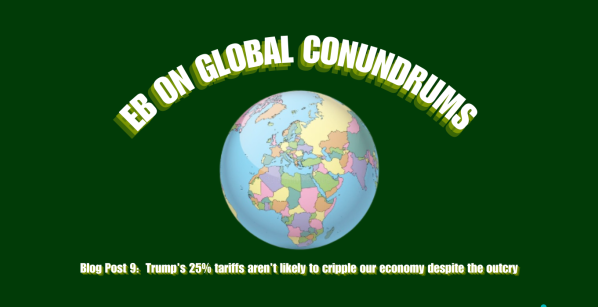The imposition of tariffs has been a vocal part of Trump’s “America First” vision regarding trade, seen in both his campaign and first two weeks in office. On the day of his inauguration, President Trump threatened tariffs on Canada, Mexico, and China.
But on Feb. 1, the president truly acted upon these threats by enacting a 25% tax on imports from our northern and southern neighbors, and a 10% tax on imports from China.
With these tariffs, Trump aims to coerce them to address and handle the Fentanyl and immigration spillover into the United States from all three countries.
These tariffs were foreseeable to say the least, as the threats were a clear example of Trump’s foreign policy that is keen on holding other states accountable and focusing on domestic interests. In other words, this 25% and 10% tax is a mechanism to hold all three states accountable, essentially using economic hard power to achieve American imperatives.
They proved rather successful in coercing Canada and Mexico to cooperate, as seen with the 10,000 Mexican troops sent to their border to handle illegal crossings, and the blank example of canada. It only took a little over than a day for both states to comply, both their tariffs having been paused for 30 days as a result.
On the other hand, China has proven to be more reluctant in cooperating with the United States. This makes sense, considering they are our largest adversary and global competitor, whereas Canada and Mexico are our north and southern neighbors and allies.
This isn’t to say that China won’t eventually cooperate, even if it takes time or some retaliation, which would pause the last remaining tariff on them. Given that the state of China’s economy is on a downward spiral with high youth unemployment, a real estate crisis, and their reliance on exports for economic sustenance, it is in the Chinese interest to not prolong the effects of this tariff. The fact that we are their prime trading partner also adds weight to the severity of it.
I presume that Beijing will eventually come to deal with their drug and immigration spillover, but being so swift to accept their fate doesn’t present a strong front for the world’s largest revisionist power.
Despite all this, major headlines surrounding these multilateral tariffs seem to only focus on the domestic implications that will ensue. Reports have calculated that if these tariffs were long term, the price of toys, fashion, and other goods from all three states and their production would increase for us.
While the threat of our own economy reaping higher prices is present and a valid concern, they tend to wash over the larger goal at hand.
The increased cost of production and sale for US consumers is a known reality of tariffs, and is only a headache compared to the economic strife all three countries will endure.
The point was to coerce them to comply with American imperatives such as curbing drug spillover and illegal immigration into our country, and the tariffs proved rather successful in doing just that, the only remaining tariff being on China as we await their compliance.
These tariffs were not without reason, and that reason of curbing drug and immigration spillovers takes priority over an increase of prices that are only temporary. Whether you agree with Trump’s more hawkish foreign policy, one cannot deny that the ultimate goal is to ensure domestic interests and tranquility.
Assessing the plausible negative consequences of these tariffs is valid, but to present this information as a certainty is a hyperbolic assumption that overlooks the geostrategy at hand. It even assumes that Trump is unaware of these possibilities, or that the president would be willing to set his country up for economic strife to that degree.
Regardless of how one feels about his policies, it is unlikely that he, or any leader, would keep the tariffs for so long that his country will be the one reaping the economic consequences.
The president may be a crude politician, but no leader would knowingly employ a revenge tactic that would end up harming his own economy in the end —especially when fixing the economy was one of his largest goals as President for two terms.






